In Part 1 of this story, we heard how Horatio Robley came to New Zealand as a young officer in the British Army and witnessed the devastating British defeat at Gate Pā. In Part 2, we hear how the Tauranga War ended, and how Robley became famous as a collector of Mokomokai, preserved Māori heads.
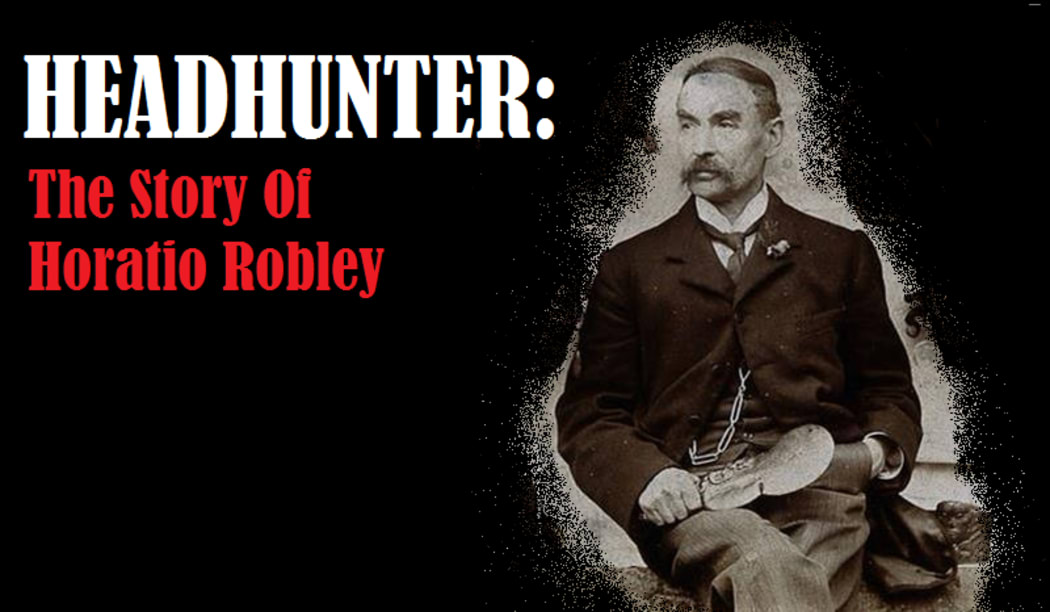
Photo: Public domain
A few months after Gate Pā, Māori and British came to blows again at Battle of Te Ranga. This time the British caught Tauranga Māori before they could finish building their Pā, and the half-dug trenches became a mass grave for 108 warriors.
Within weeks a peace was negotiated, but Robley and his fellow soldiers stayed on in Tauranga for several more months. In those months, Robley had a chance to become much more intimately involved in Māori culture ...and with one Māori woman in particular.
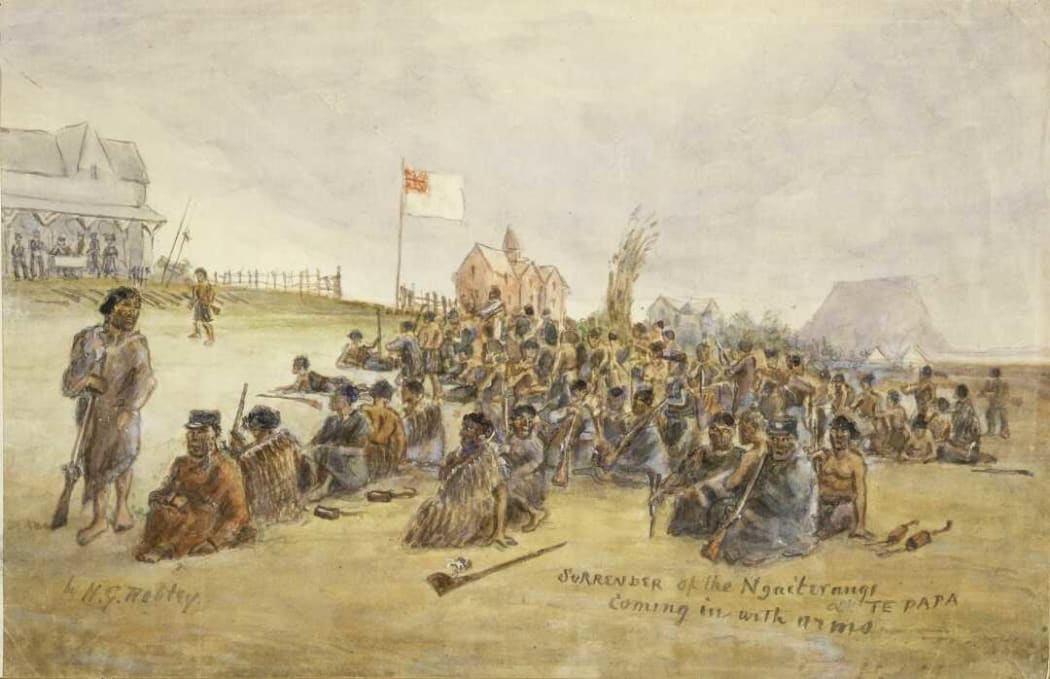
Robley painted the surrender of Ngāi Te Rangi, one of the main iwi the British fought in Tauranga Photo: Alexander Turnbull Library
Horatio Te Ropere
With the spectre of war lifted, Robley doubled down on his artwork. He painted spectacular watercolours of Tauranga landscapes and took portraits of prominent Māori in the region, including some leaders of the Ngāi Te Rangi tribe who had participated in the Battle for Gate Pā.
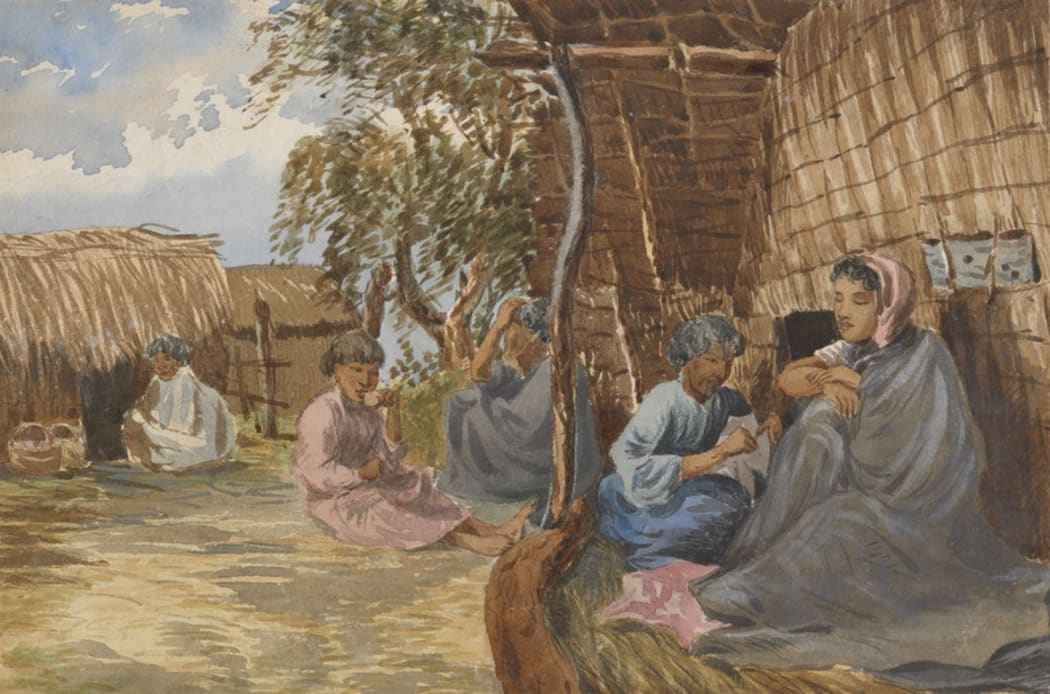
Robley painted many intimate scenes of life inside Māori society. Photo: Alexander Turnbull Library
Tauranga Māori clearly respected Robley’s skill as an artist and eventually they allowed him to sketch some incredibly intimate and sacred moments.
“There was a gradual building of rapport,” explains Tim Walker, pointing out a painting Robley did at a tangi (Māori funeral rite). “Astonishing for a Pākeha [soldier] to be sitting in that context.”
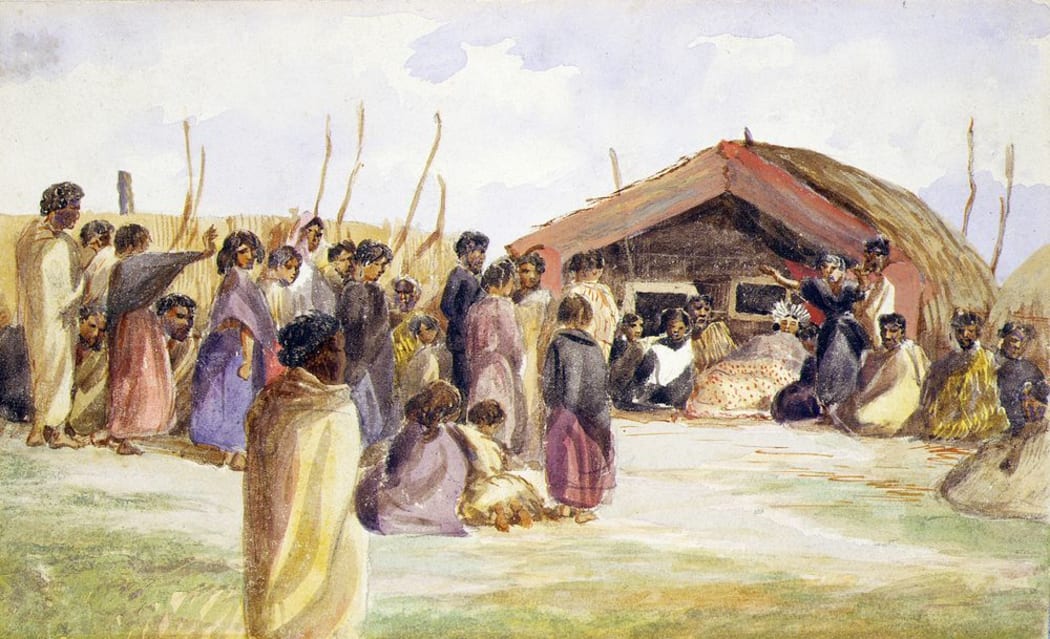
A painting of a tangi by Robley Photo: Alexander Turnbull Library
Somewhere in the middle of this, Robley formed a relationship with a Māori woman - and not just any woman: Herete Mauao, daughter of one of the highest ranking chiefs in the entire Bay of Plenty region.
“Some kaumātua have told me she was presented to Robley as an act of respect for his mana,” Walker says. “It seems hard to understand in one way because he was only an itinerant soldier who’s part of a colonising force.”
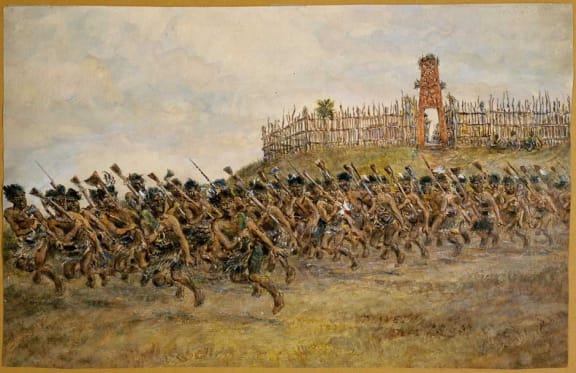
Robley's painting of a haka at Maketu Photo: Alexander Turnbull Library
However it began, Robley and Herete’s relationship became serious very quickly. Herete gave birth to a son, named Hamiora Tu Ropere after his father.
But Robley didn't stay with his family for long. After just 20 months, the 68th regiment were redeployed away from New Zealand. Robley would never see Herete or Hamiora ever again.
However, he maintained a deep and sometimes deeply problematic connection with Aotearoa for the rest of his life.
Headhunter
Horatio Robley’s career in the British Army took him all over the world. He eventually retired at the rank of Major General in 1887. But one day as he was travelling on a bus in London he saw something which rekindled his passion for New Zealand.
“It was more than 20 years after leaving NZ … that an accidental chance led to the supreme art of collecting and writing about [Moko and Mokomokai]. Passing one day along the Brompton Road, I espied from the top of an omnibus on which I was travelling a phrenologist re-arranging his window, and in the window was a Māori Head” - Horatio Robley
This Māori head was a mokomokai, a preserved, tattooed head. It was a relic of a horrific trade from the Musket Wars of the early 1800s, when Māori exchanged the preserved heads of tattooed slaves for guns with European traders. The usual deal was two heads per musket.
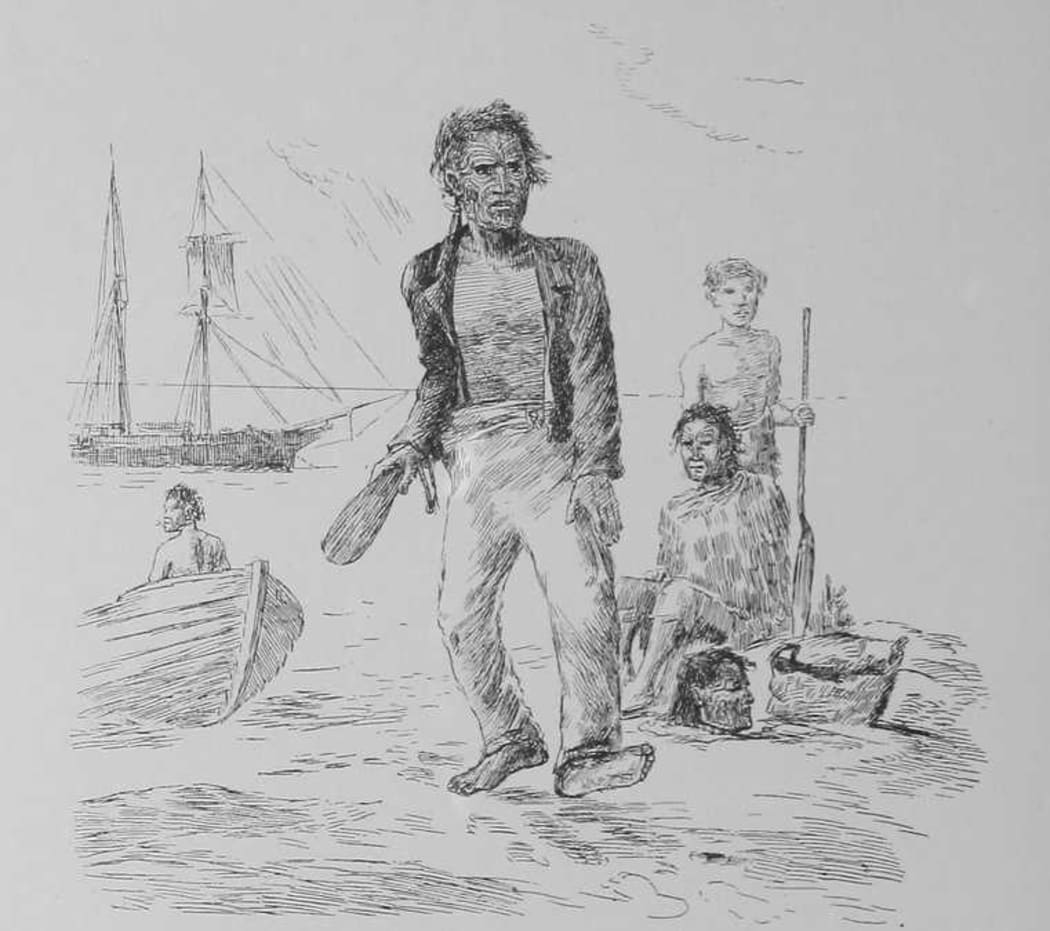
An imagined scene from Robley's book depicting a Maori chief selling mokomokai to European traders. Photo: Public Domain
By the time Robley saw this Māori head in a shop window, this trade had been banned by British authorities. But there were still thousands of heads in museums and private collections all across Europe. Over the next few years Robley became completely obsessed with collecting mokomokai. He wrote in a gleeful tone about his headhunting in his memoir.
“The row of heads that I have hunted, served for, waited for, begged, taken & refused to restore … & when coin was not to be offered, [I] have [paid] for in exchanges away [of] such things as I cannot replace, I knew that I was getting a unique collection … this is the only show in the world.” - Horatio Robley
Robley eventually collected nearly 40 mokomokai which he displayed all around his house. The sight was vividly described in the diary of a friend who visited him:
“I called on Major General Robley and found him taking his ease at full length on a couch; around the somewhat small room were displayed 38 … preserved heads with tattooed faces — they were on tables, sideboards, mantlepiece — everywhere. The possessor of them was smiling proudly at the gruesome display.” - A visitor to Robley's house in teh 1890s
It’s always been assumed Robley collected human heads out of sheer curiosity. The Victorian era was the age of the eccentric colonial collector after all, and in that context Robley was only slightly beyond the norm of his time.
But Tim Walker thinks there was more to it. He thinks Robley’s collection was a means to an end - understanding tā moko, traditional Māori tattoo.
And right at the time Robley was building his collection of heads, this art was beginning to vanish.
War, Politics, Religion and Moko
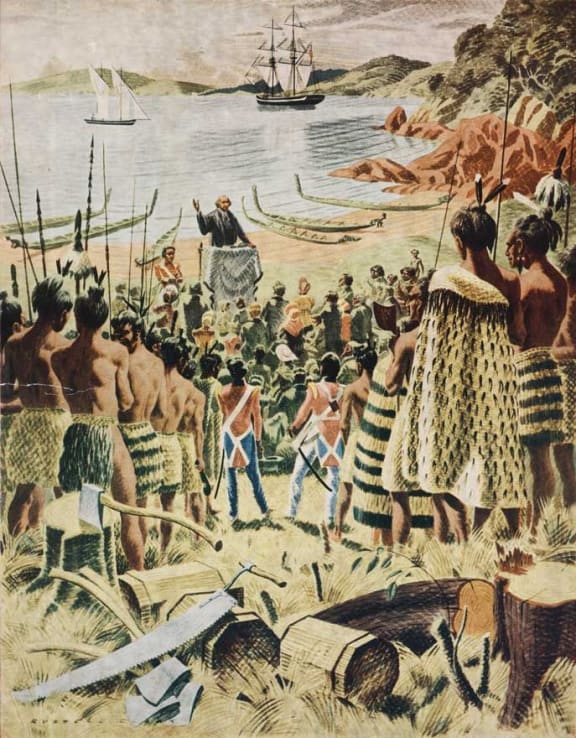
Russell Clark's reconstruction of Samuel Marsden's Christmas Day service at Hohi (Oihi) Bay in 1814. Photo: Alexander Turnbull Library
Today it’s unusual to see Māori men wearing facial moko. In western society facial tattoos are stigmatised, and that stigma has a long history in New Zealand.
Early on, the aversion to moko may have been a form of self preservation. One missionary in the 1830s wrote that wearing moko was literally like painting a target on your face:
“No man who was well tattooed was safe for an hour unless he was a great chief, for he might be watched until he was off his guard and then knocked down and killed, and his head sold to the traders.”
It’s easy to see how this might have made Māori uneasy about wearing moko. But missionaries also had a direct role in suppressing what they described as a “truly hideous” and “barbarous practise”. Early New Zealand missionary Leddiard Nicholas wrote that “missionaries will exert all the influence they are possessed of to dissuade [Māori] from [wearing moko]”.
This seems to have simply been a european hangup about facial tattoos. One that continues to this day.
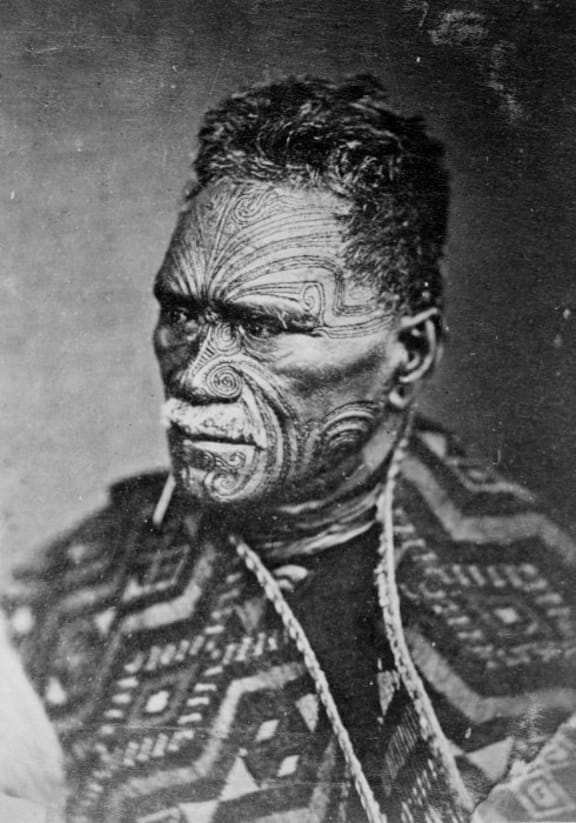
The Maori King, Tawhiao, wore full-face moko and encouraged others to keep the tradition alive Photo: Alexander Turnbull Library
During and after the New Zealand Wars the stigma of facial moko hardened even further.
That's probably because the leaders of Māori resistance movements, like Kingi Tāwhiao, wore moko and encouraged others to preserve the art.
Tattooed faces came to be seen as a symbol of resistance to the colonial authority. As the tide of war swung against Māori and land confiscation ramped up, moko was actively suppressed and the knowledge of how to create it passed out of living memory.
According to In Your Face: Wearing Moko - Māori Facial Marking in Today’s World, moko nearly vanished entirely over the following century.
“For at least two generations into the twentieth century the pukanohi (fully tattooed face) was rarely seen. Although there are still aged Māori who recall their childhood and teenaged years looking in awe at the faded markings on a venerable old man’s face.” - In Your Face: Wearing Moko - Māori Facial Marking in Today’s World
But today facial moko is seeing a resurgence, and Robley’s collection of heads has played a large part in that revival.
The Book of Heads
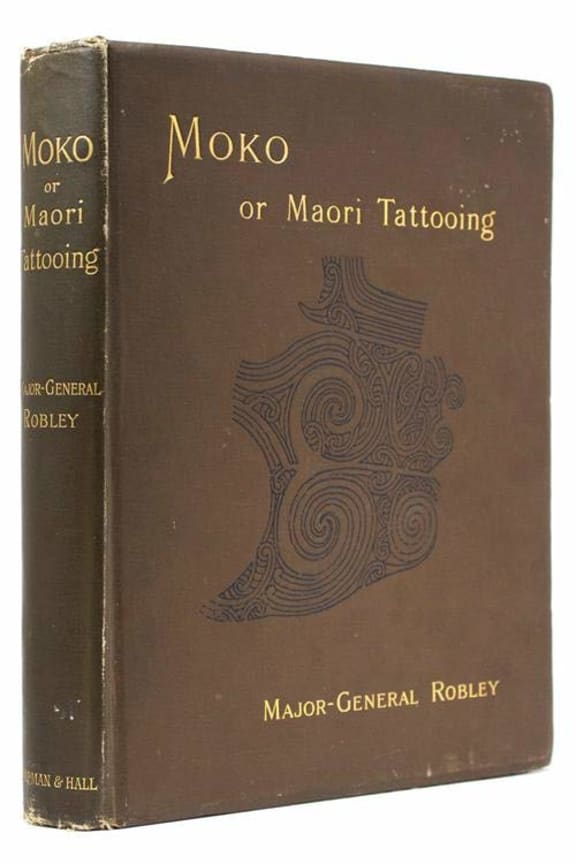
Horatio Robley's book is one of the only written sources of information on Moko from before the art began to vanish. Photo: abebooks.co.uk
In 1896, Horatio Robley published a book: MOKO, or Māori tattooing. It’s literally a face-book; pages and pages of writing and sketching about moko and mokomokai.
Robley’s book includes extremely detailed sketches of his collection. They note every mark of the tattooist’s chisel, the arc of every curved line, complete with explanations of how these marks were produced and in what order.
Walker believes a fascination with moko was the sole reason Robley collected Māori heads.
“It’s not because of an interest in the macabre, it’s not because of an interest in human remains, it’s not about colonial booty,” Walker says. “More than that, it’s about the evidence of the design system that [mokomokai] alone hold.”
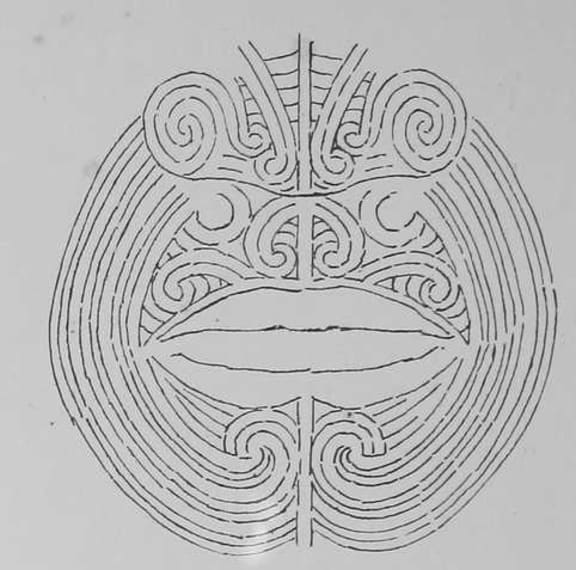
Sketches like these from Robley's book are still used by modern moko practitioners as references. Photo: Public domain
“The more moko he drew, the more he got pulled in,” explains Tim Walker. “He realised that [moko] is a design system with a set of rules and every time moko is invoked it generates an entirely new pattern.”
Robley went beyond just copying the patterns he sees on mokomokai. Walker believes his understanding allowed him to become a moko artist in his own right. Albeit, without the deep traditional knowledge of a true practicioner about the meanings of these patterns.
Robley painted his own face in moko patterns for fancy dress parties. He got hold of a plaster cast of a Māori chief’s head and engraved moko onto it. He doodled moko patterns in the margins of letters. He sketched prominent Pākeha politicians with moko drawn on their faces.
From today's perspective it's a wildly problematic form of cultural appropriation. But Haami Piripi, a modern expert on mokomokai, says Robley's actions had long term benefits for Māori.
He says without Robley's book, the art of moko could have been lost entirely.
“Perhaps in some isolated communities it might have been preserved by specific tohunga [expert practitioners], but as a generic source of knowledge I would say [Robley] is foremost in that field.”
Piripi says in more recent years Māori experts like Dave Simmons have gone on to interpret the meanings of the patterns Robley recorded.
“So today we have a fairly good idea of what a tā moko is made up of, how it’s done, what’s a no-no and what’s not. Robley himself has contributed significantly to this body of knowledge.”
But in his own time Māori were less than appreciative of Robley’s work. Some of his own family couldn’t forgive his collection of human heads.
Divided Legacy
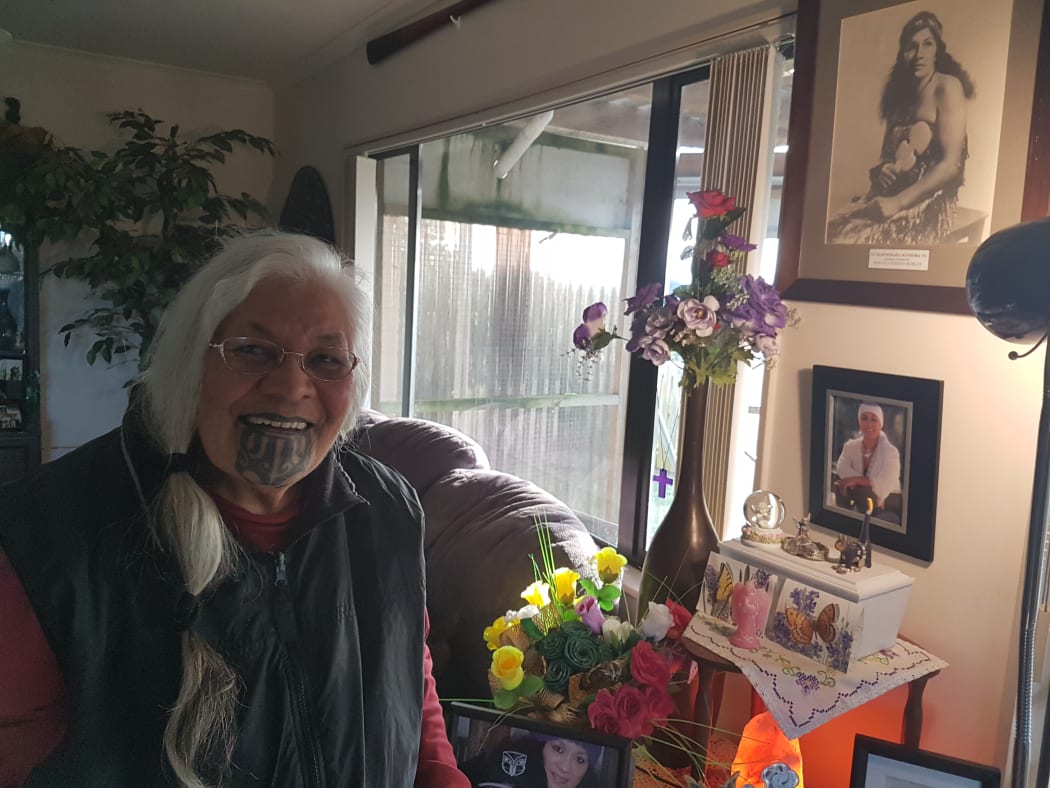
Googie Tapsell. A photo of her grandmother, Horatio Robley's daughter, is in the top right. Photo: RNZ/William Ray
“He hated his grandfather,” says Googie Tapsell from her house in Maketu, holding the framed photo of her uncle Hepata. “Didn’t want to know about him… hated him.”
Tapsell is Horatio Robley’s great granddaughter, the decendant of Hamiora Tu Ropere, the son Robley left behind in New Zealand.
Today, Googie Tapsell is in her 80s but she still remembers hearing how Horatio Robley’s legacy divided the family. The story she remembers most vividly is what happened when a copy of Robley’s book was delivered to her Uncle Hepata, Hamiora's son.
“He stomped on that book … he said ‘I don’t want to know about him’,” Tapsell recalls. But she says her uncle’s attitude wasn’t universal. Her own mother, Robley's granddaughter, kept up a connection through letters to London. “Mum loved him. [Robley] wanted to bring her to England for her education … But she wouldn’t go. Didn’t want to leave New Zealand.”
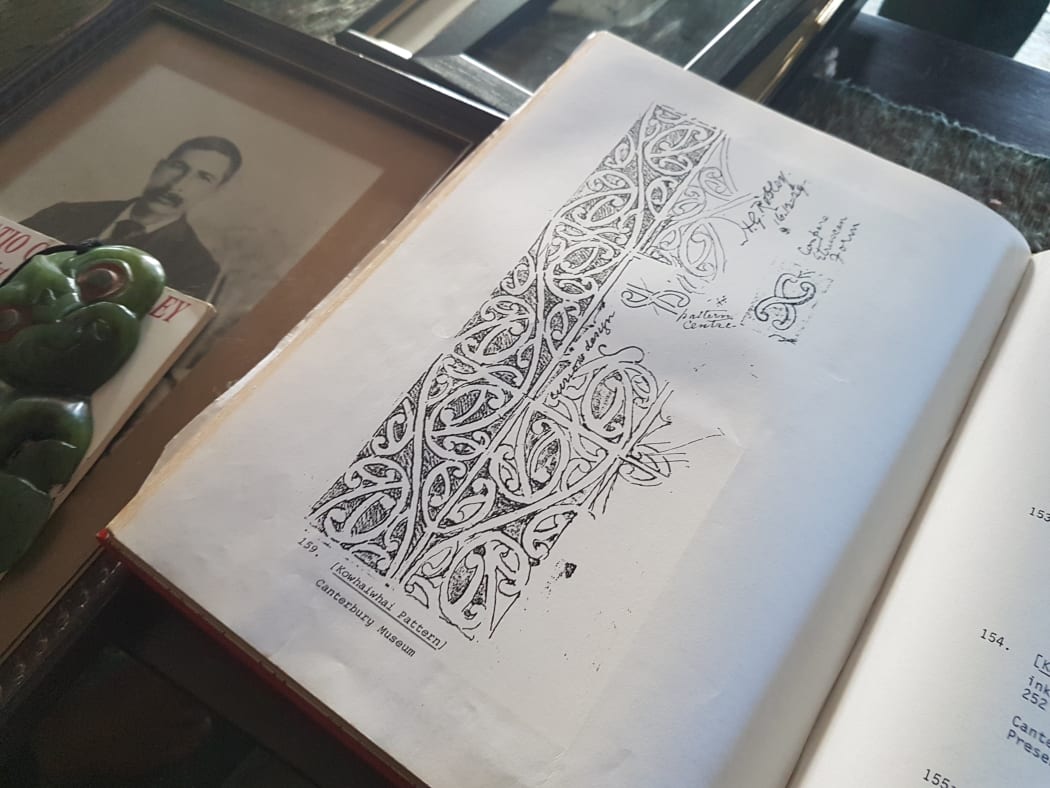
Googie Tapsell's coffee table. An image of Robley's son Hamiora Tu is top left, a tiki once owned by Robley is bottom left, center is a page from Robley's book on moko Photo: RNZ/William Ray
It’s easy to see why Robley would be a difficult man for Googie Tapsell’s uncle to love. Aside from his collection of human heads he did some other things which could be seen as deeply offensive to Māori.
Tim Walker says one particularly bizarre incident happened when Māori soldiers visited London while on their way to the front line of the Boer War in 1900.
“Robley goes down to New Zealand House [and organises] a powhiri [greeting ceremony] for them. Puts on a piupiu [grass skirt] he brought from New Zealand and paints his face in moko.”
Robley then carried out his approximation of a Māori welcoming ritual despite not knowing more than a handful of words in Te Reo Māori. “It would have been a very strange performance,” laughs Walker. “Then, afterwards he invites [the Māori soldiers] back to his [house] and unfortunately for them… there were the mokomokai.”
From the perspective of the Māori soldiers this must have been a bizarre experience. If someone did something like this today they’d be branded culturally offensive if not downright racist, but Walker says it’s important to understand Robley was genuinely trying to make these Māori men feel welcome.
Later, during World War One he painted tāniko panels and sent them to a French Hospital where he’d heard Māori patients were being treated. It seems to have been an effort to make them feel more at home while they were recovering from their wounds.
Throughout the later years of his life, Robley frequently wrote of his desire to return to New Zealand and reconnect with the family he’d left behind in Tauranga.
And he hoped his collection of Māori heads would help fund his trip back to Aotearoa.
Coming Home
Robley spent several years corresponding with various figures in the New Zealand government, trying to convince them to buy his mokomokai collection
“He started off offering the price he had paid [for the heads],” Walker says. “His final offer was half the price plus a ticket on a ship back to New Zealand.”
Walker says Robley wasn’t looking to profit from the sale of his collection, but the government refused to buy the heads at any price. Partly because senior Māori figures in the government objected to paying money for human remains, and partly because there was a general feeling that mokomokai were relics of a dark past which were better left forgotten.
Robley still hoped to return to New Zealand at his own expense but faced a series of illnesses, injuries and financial problems which left him unable to travel. In the end, he never made it back to Aotearoa.
Horatio Gordon Robley died in 1930, at the age of 90. He was dirt poor and buried in an unmarked grave.
The Headhunter's Legacy
So what happened to Horatio Robley's collection of human heads?
Eventually, Robley sold most of the mokomokai to the American Museum of Natural History in New York. He wanted to make sure they were all kept together rather than being sold off one by one at an auction after he died.
Unfortunately, Robley couldn’t bring himself to part with five of the heads which he kept in his personal collection. Sadly, these have vanished.
But the heads which went to the Museum had a happier ending. After painstaking negotiation they were returned to New Zealand in 2014 as part of a wide-ranging effort to recover Māori remains from overseas museums. Today, the mokomokai are sitting in a special room at Te Papa museum.
Eventually, it’s hoped they’ll be identified and returned to their whānau (extended family).
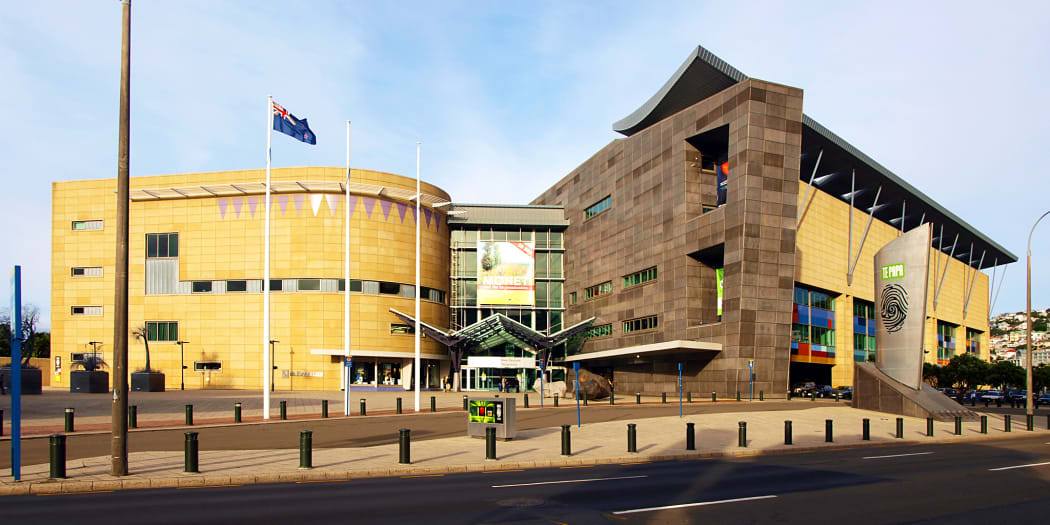
Today Horatio Robley's collection of Mokomokai are held at Te Papa museum Photo: CC4.0
And Horatio Robley left one last treasure which is still waiting to be uncovered. Robley was never happy with the book he wrote on moko. “He quickly came to see it as an embarrassment,” Walker says.
Robley spent the 12 years after it was published gathering even more information from Māori experts back in New Zealand and from his examination of the mokomokai in his collection.
He planned to use these notes and sketches to publish a second, much more detailed book. But he died before it could be finished. It was never published and for the better part of hundred years that priceless information was left gathering dust in the UK.
Luckily, in more recent years this material has also been repatriated. Today, this material - maybe the single most detailed written record of tā moko - sits in an archive in Dunedin.
Walker hopes that one day a modern moko practitioner will find the time to comb through Robley’s work, and that the man once dubbed a “predator of culture” can be fully redeemed as a “friend of the Māori”.
Listen to the Black Sheep podcast to hear more details of Horatio Robley's story, including an interview with a modern moko artist.

